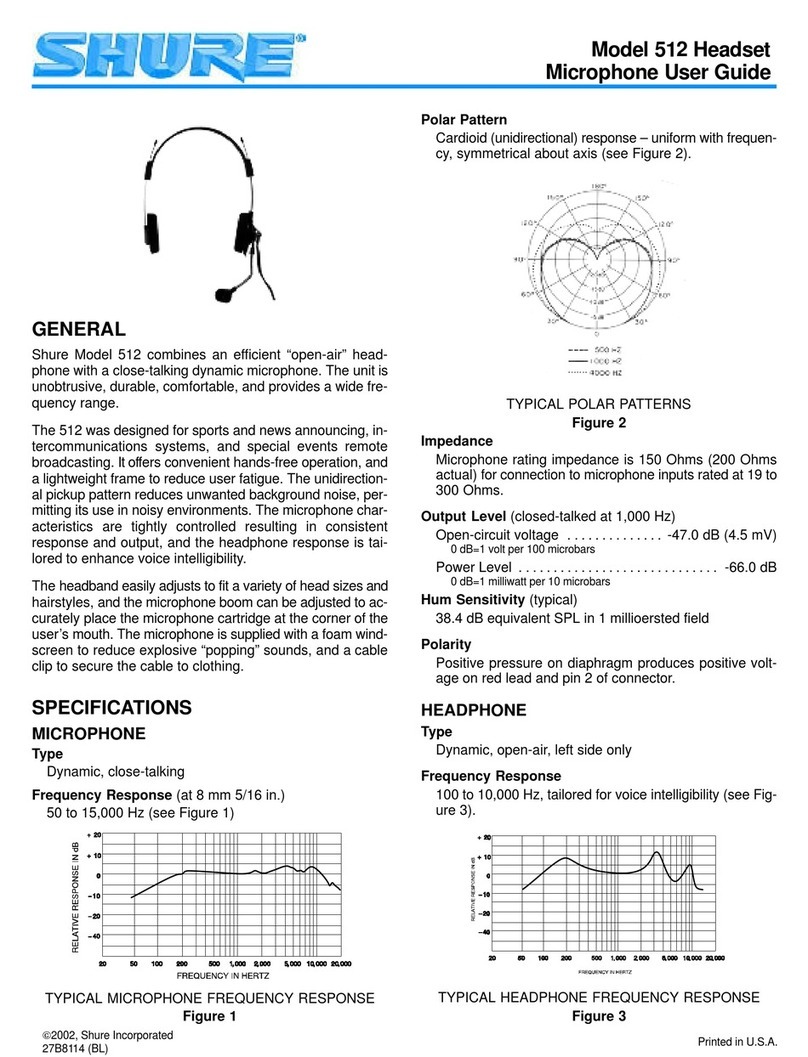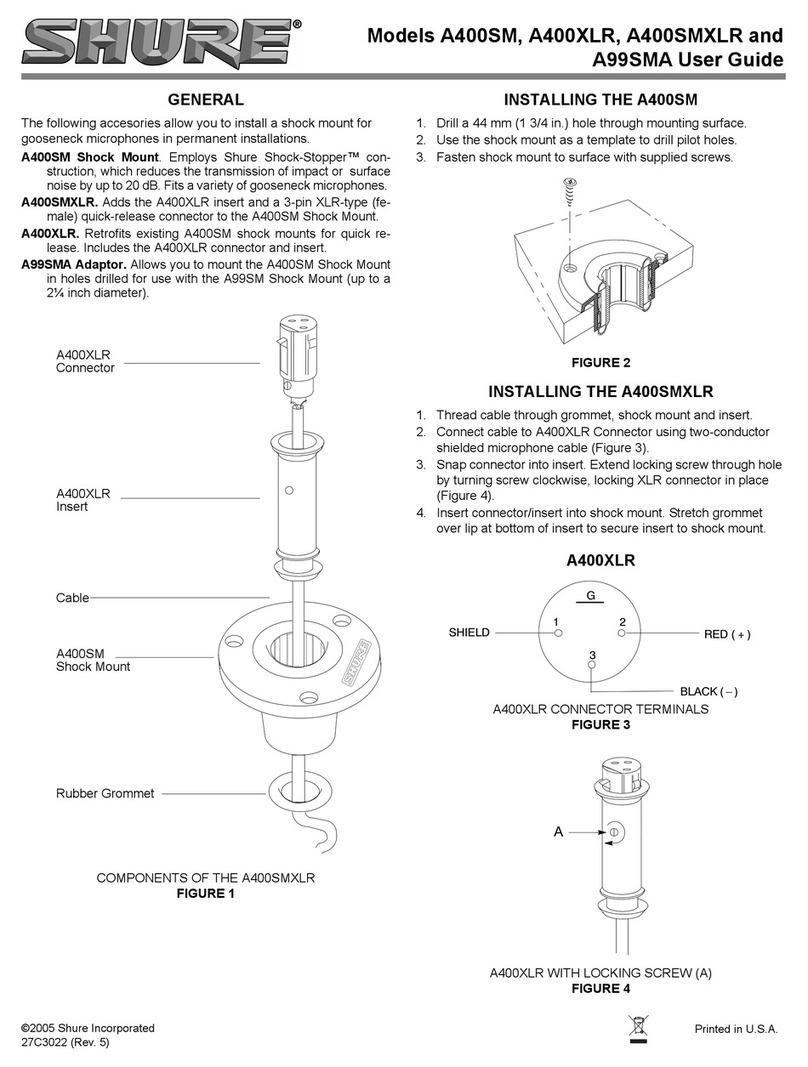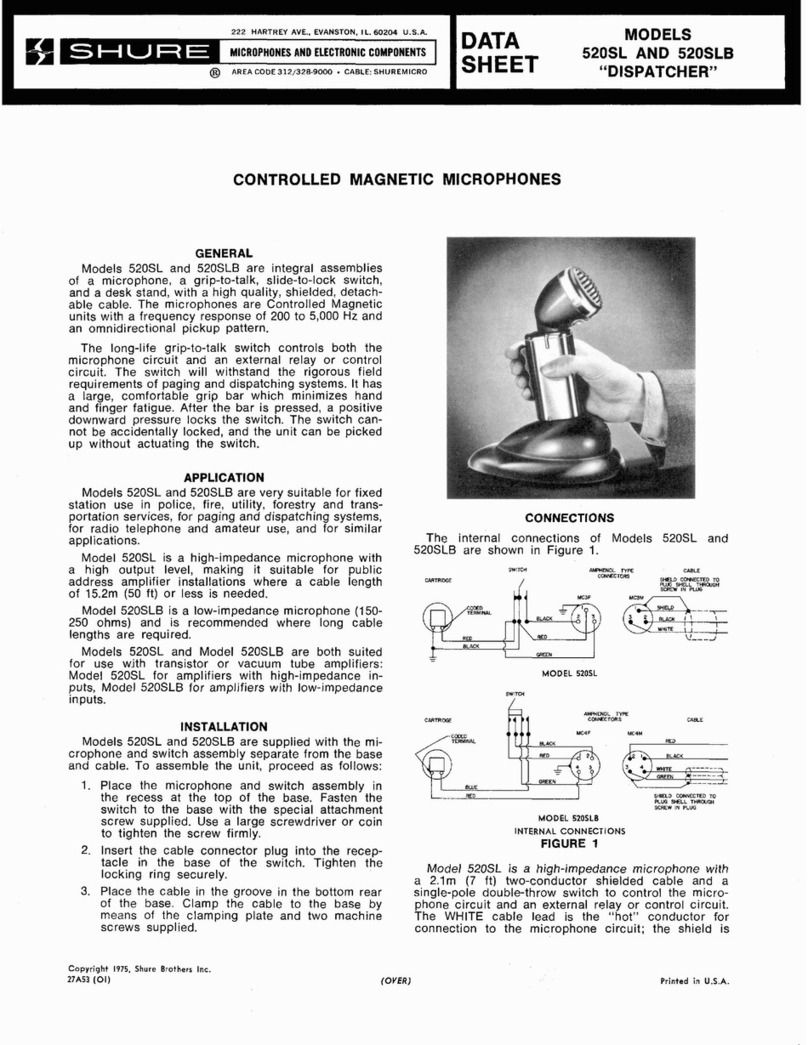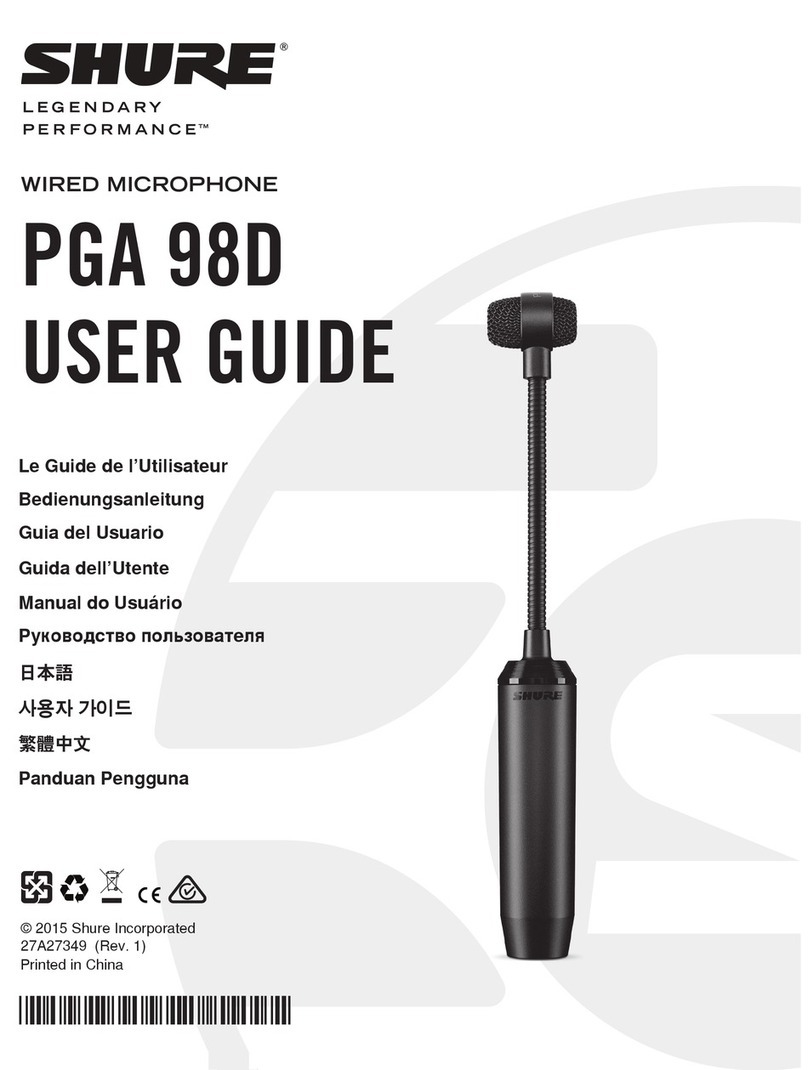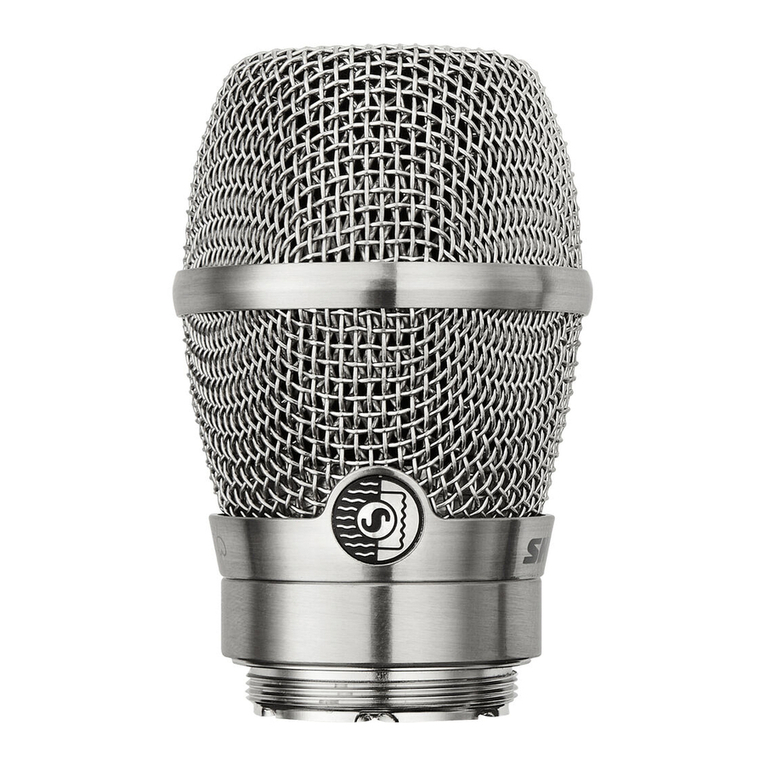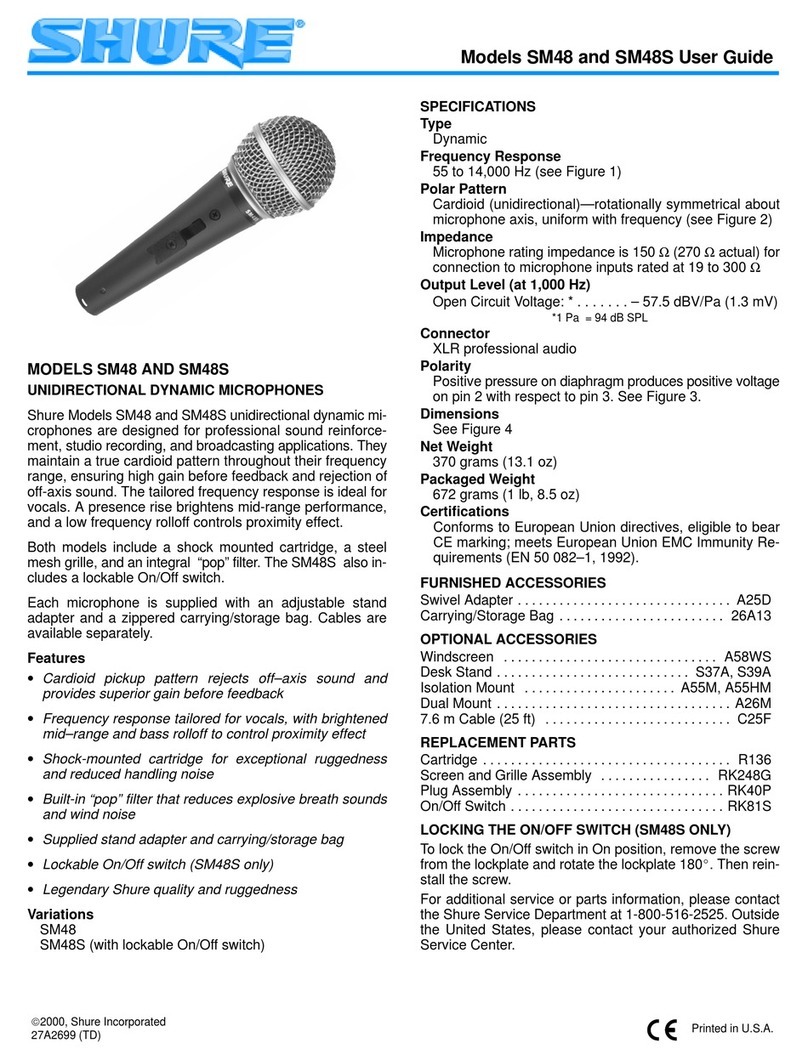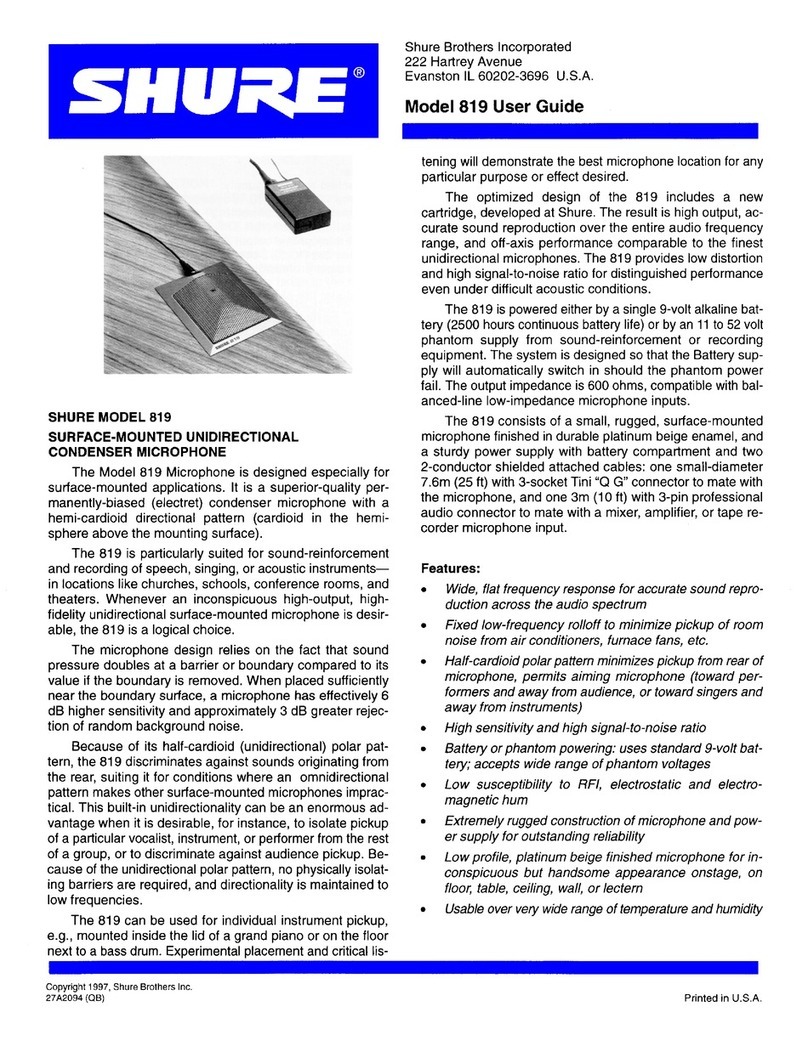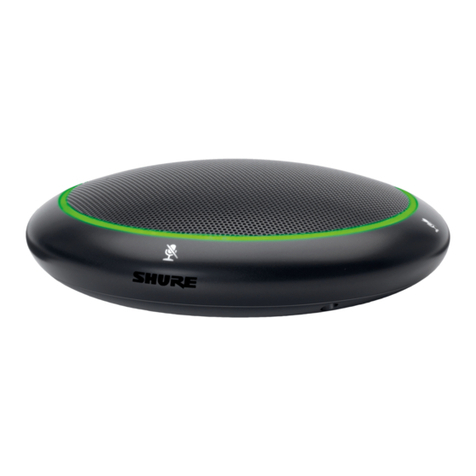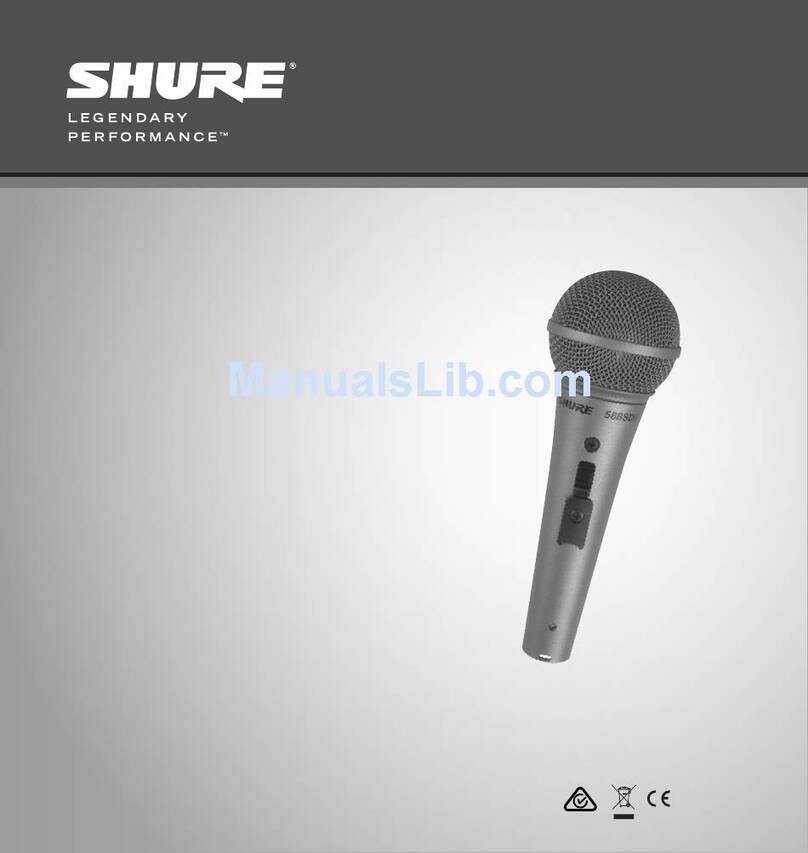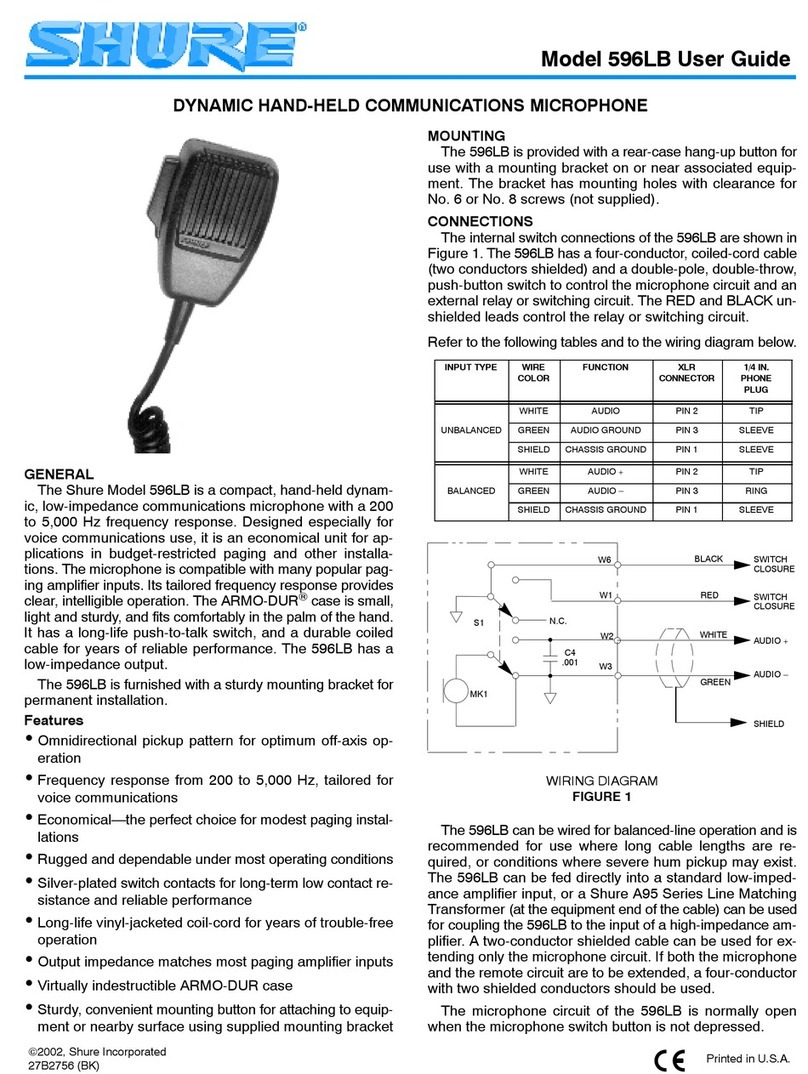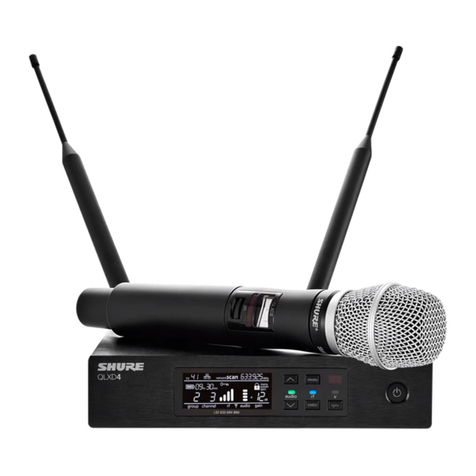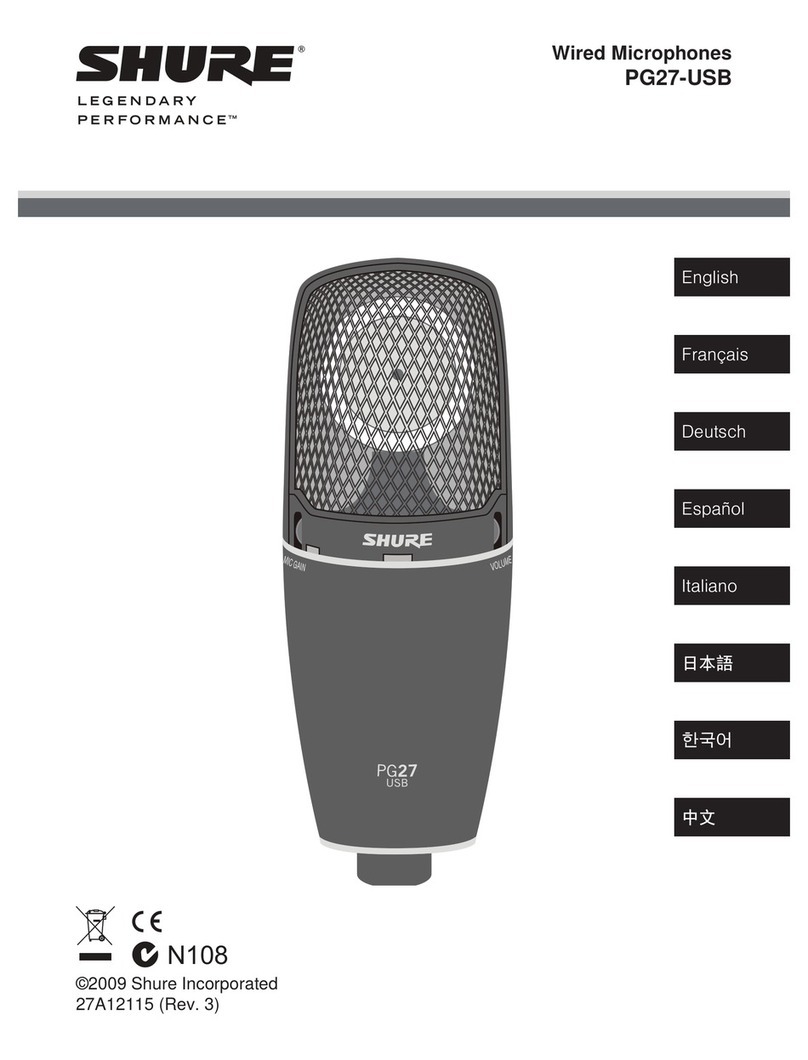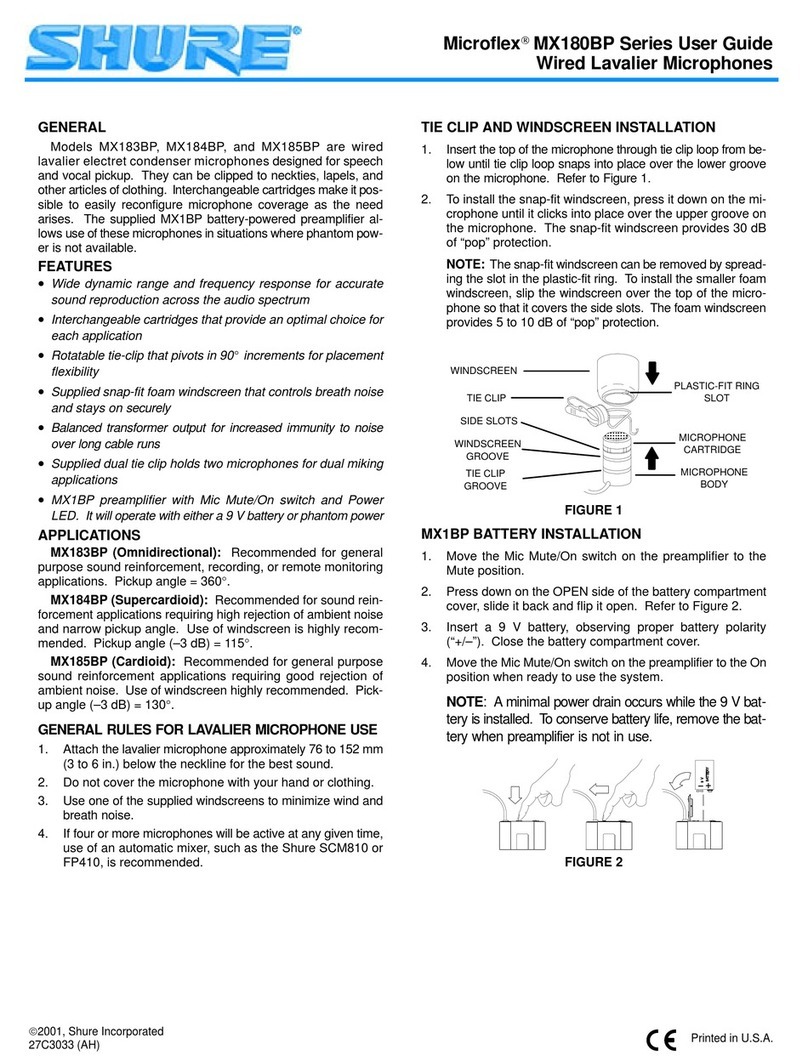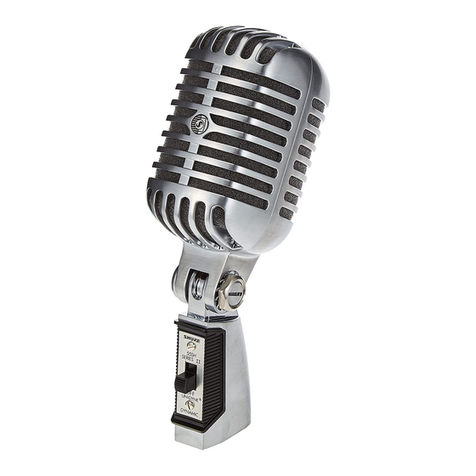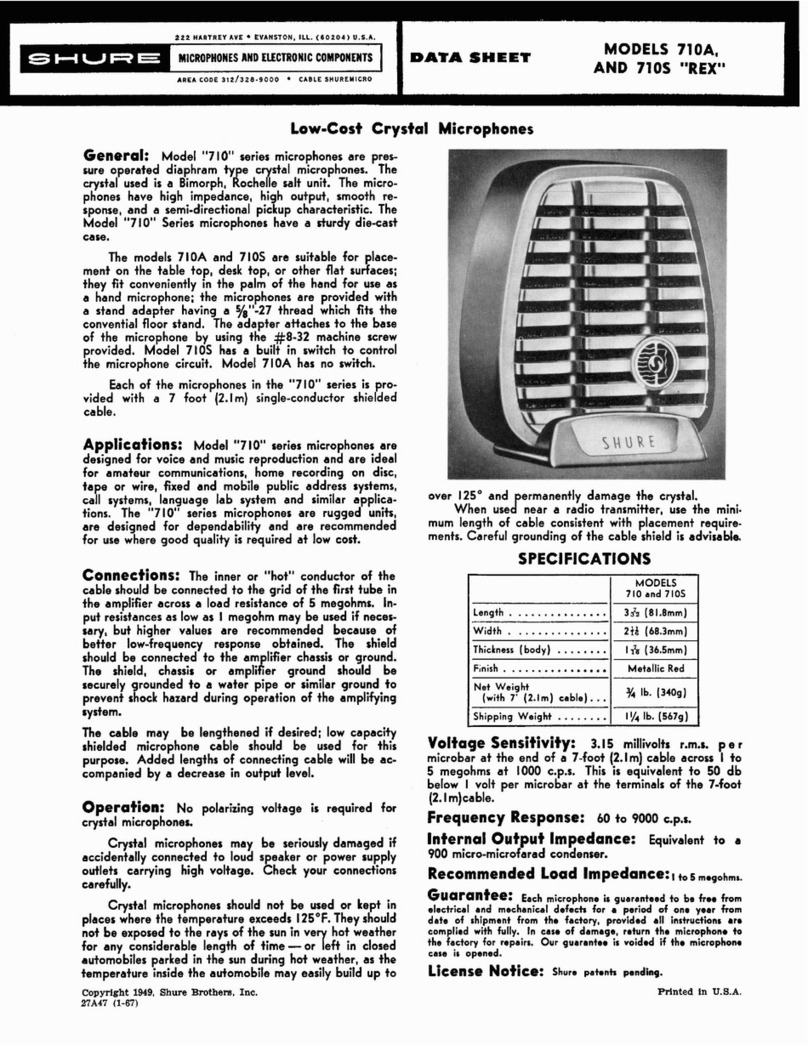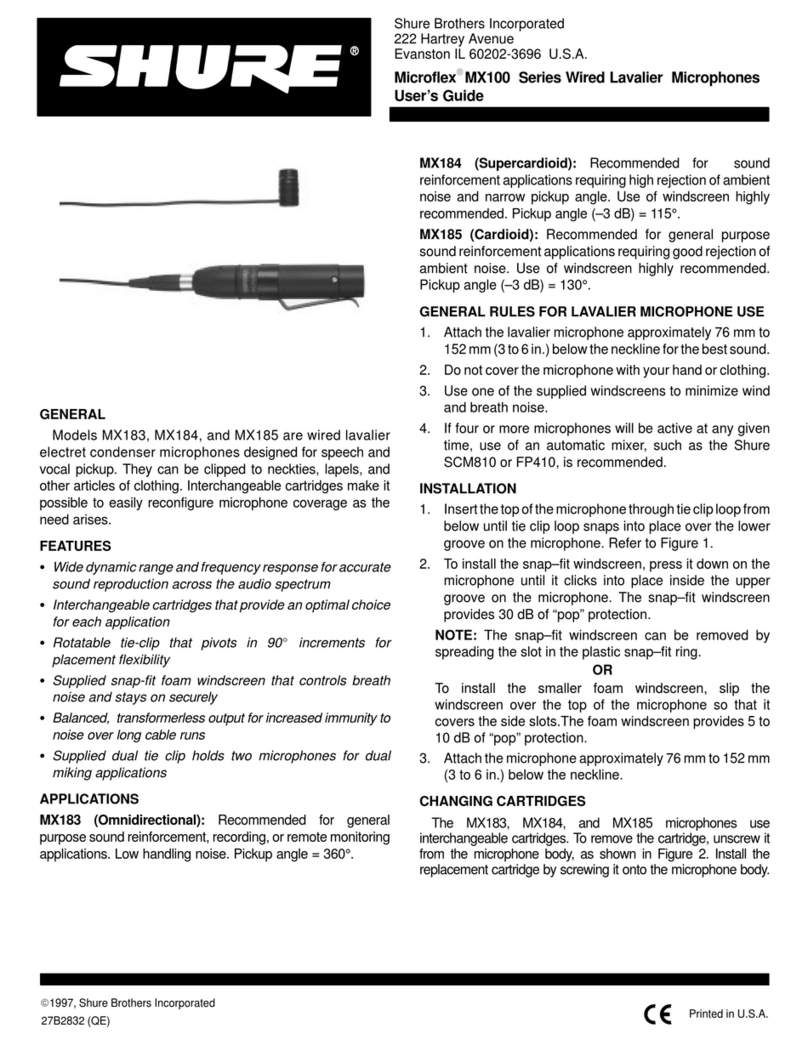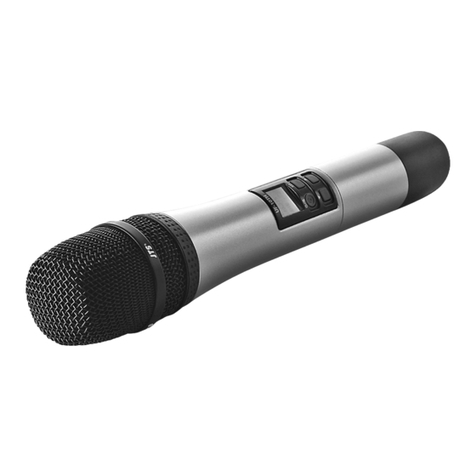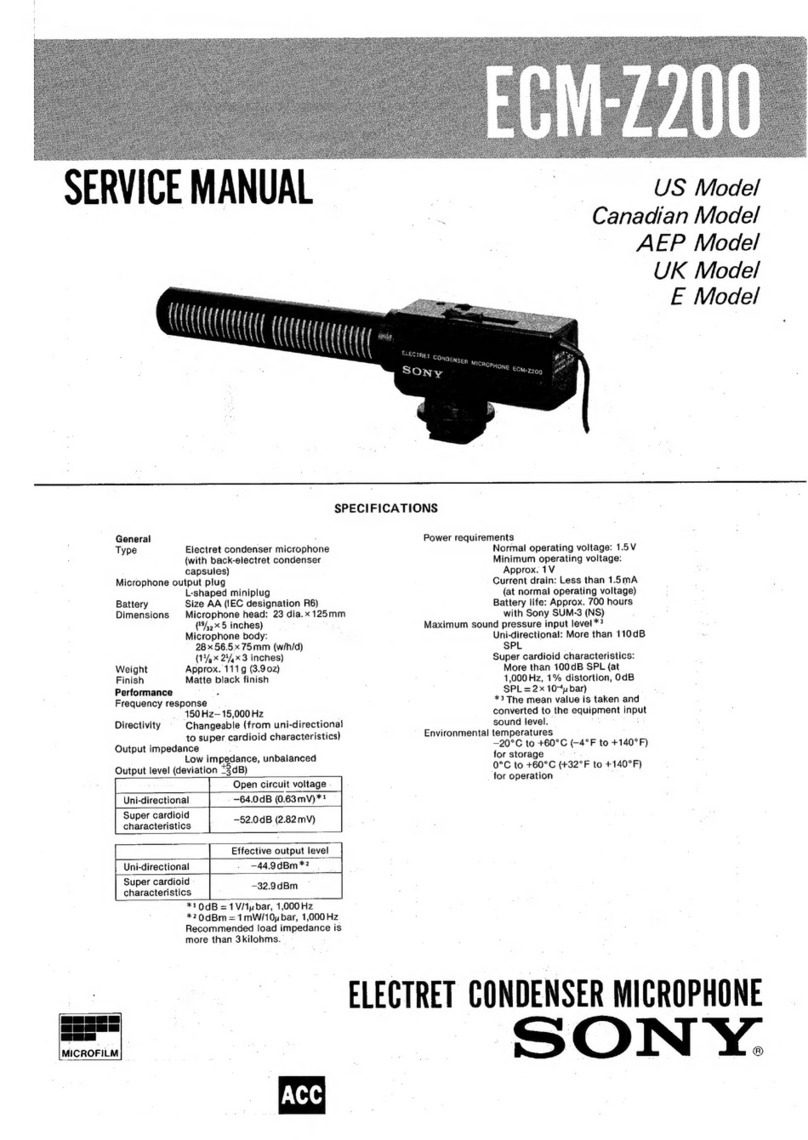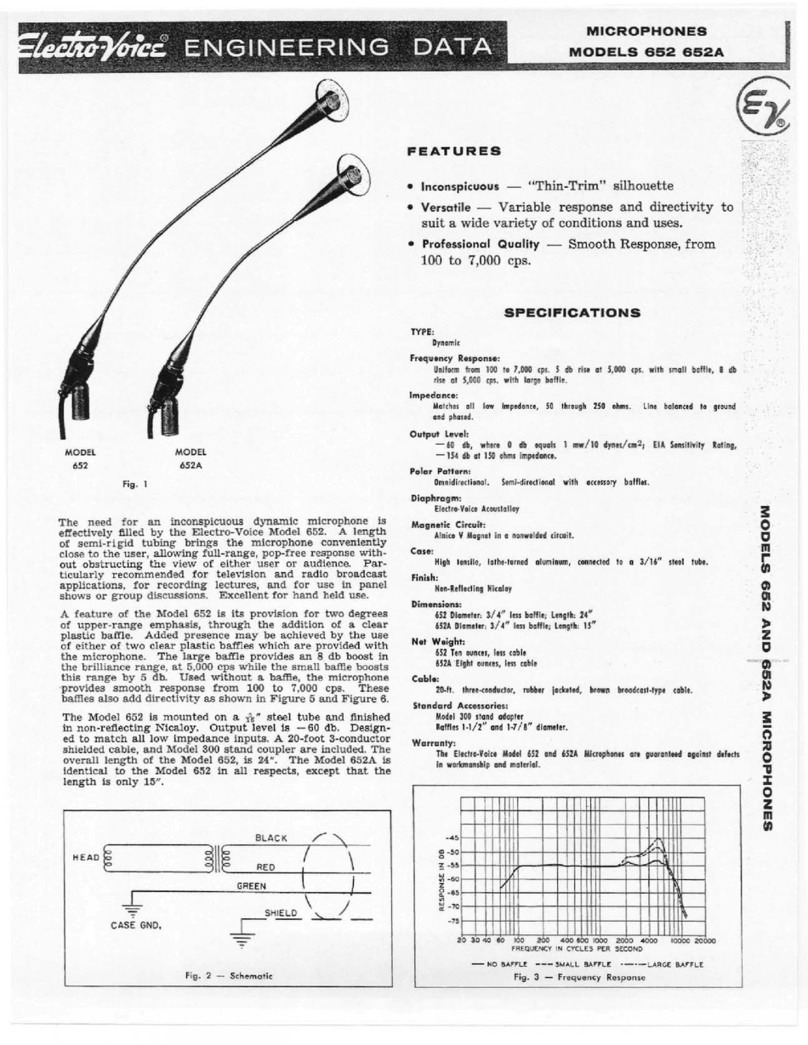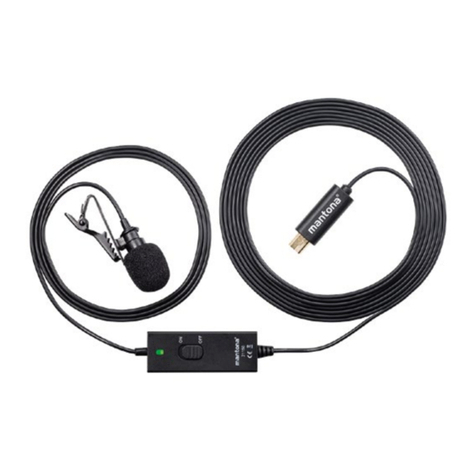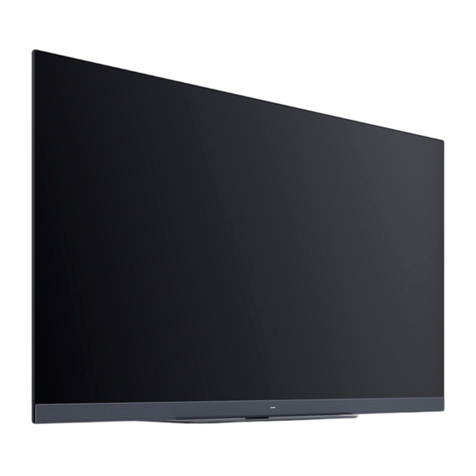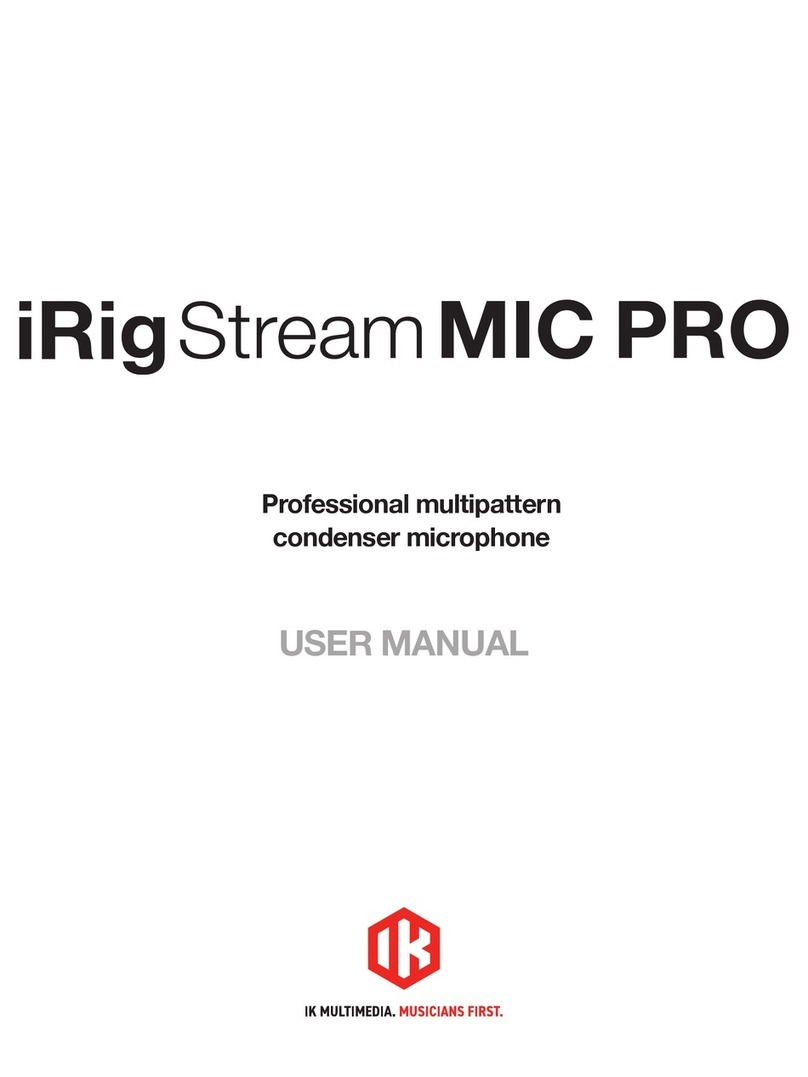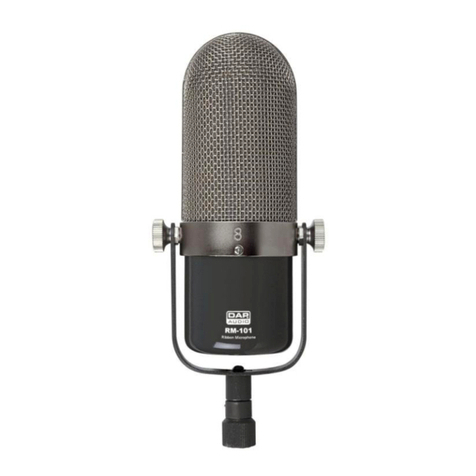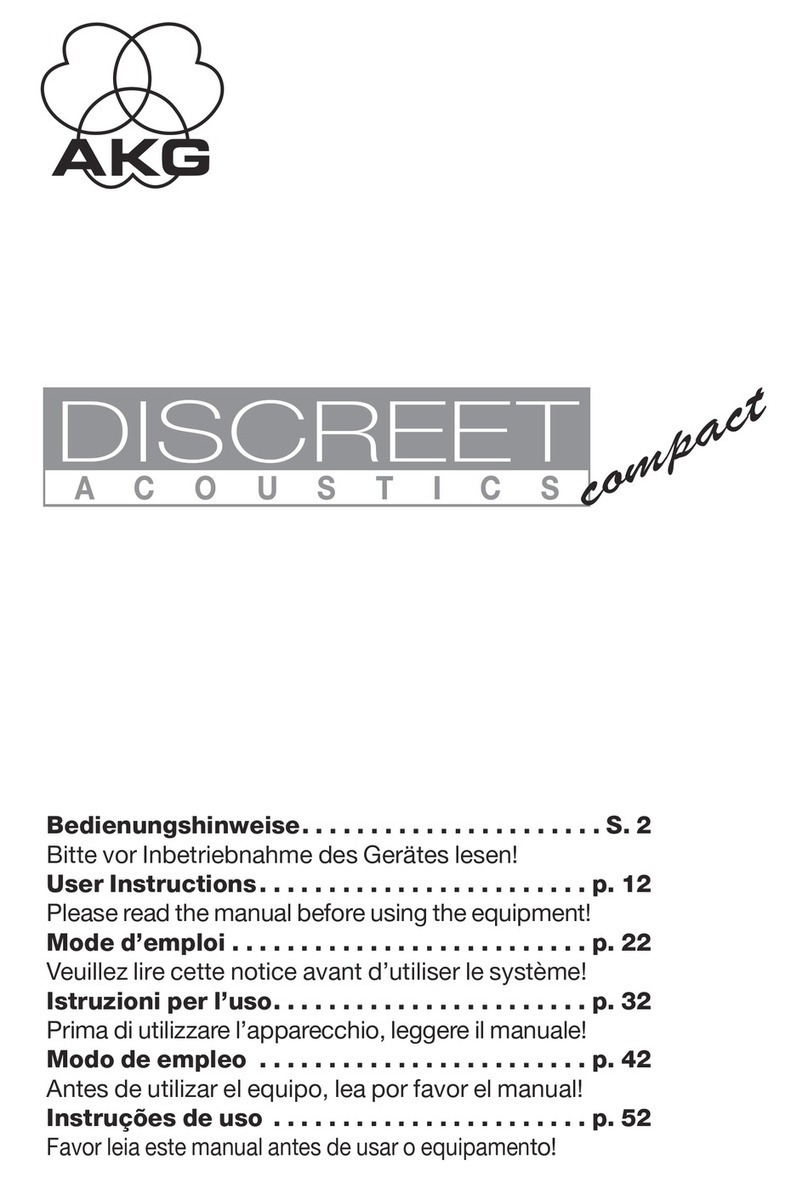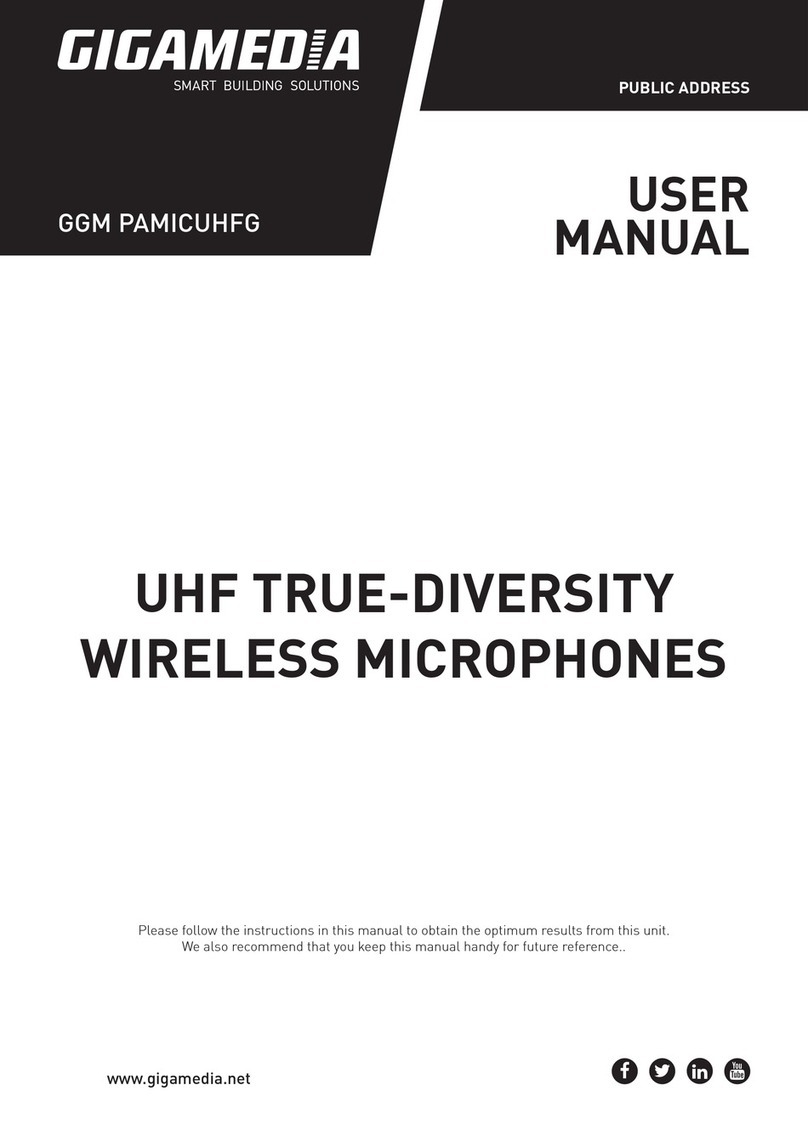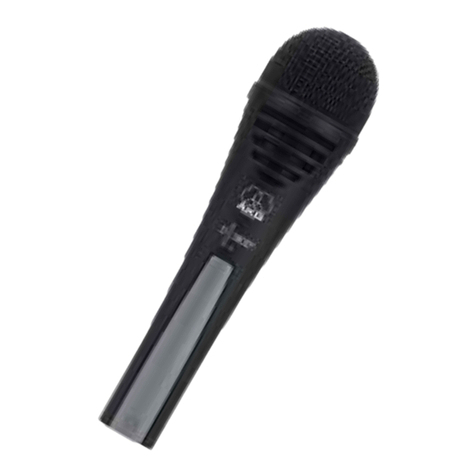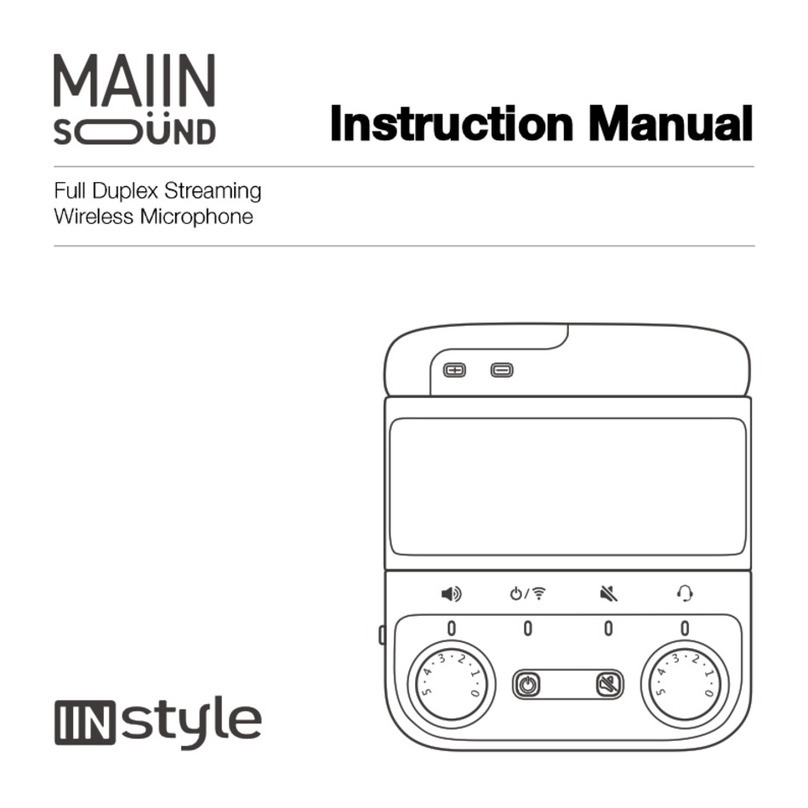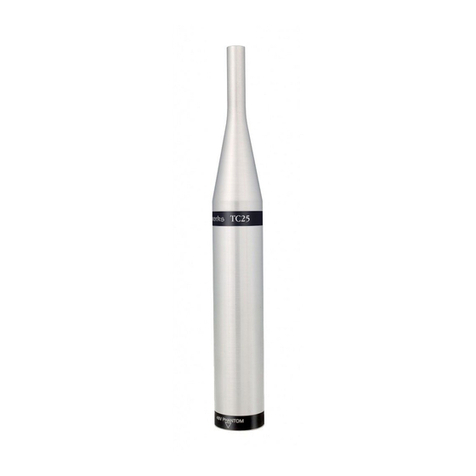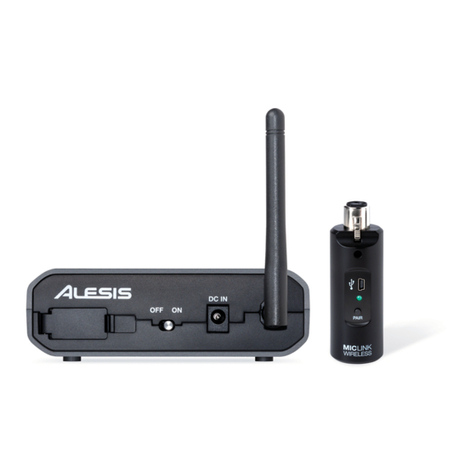3
SAFETY PRECAUTIONS
The possible results of incorrect use are marked by one of the two symbols - “WARNING” AND “CAUTION” -
depending on the imminence of the danger and the severity of the damage.
WARNING: Ignoring these warnings may cause severe injury or death as a result of incorrect operation.
CAUTION: Ignoring these cautions may cause moderate injury or property damage as a result of
incorrect operation.
WARNING
If water or other foreign objects enter the inside of the device, fire or electric shock may result.•
Do not attempt to modify this product. Doing so could result in personal injury and/or product failure.•
CAUTION
Never disassemble or modify the device, as failures may result.•
Do not subject to extreme force and do not pull on the cable or failures may result.•
Keep the microphone dry and avoid exposure to extreme temperatures and humidity.•
PRÉCAUTIONS DE SÉCURITÉ
Les résultats possibles d'une utilisation incorrecte sont marqués par l'un des deux symboles -
AVERTISSEMENT et ATTENTION - selon l'imminence du danger et la sévérité des dommages.
AVERTISSEMENT : L'ignorance de ces avertissements peut causer des blessures graves ou la mort
suite à une utilisation incorrecte.
ATTENTION: L'ignorance de ces mises en garde peut causer des blessures modérées ou des dégâts
matériels suite à une utilisation incorrecte.
AVERTISSEMENT
Si de l'eau ou autres matériaux étrangers pénètrent dans l'appareil, il y a risque d'incendie ou de choc•
électrique.
Ne pas essayer de modifier ce produit. Une telle opération est susceptible d'entraîner des blessures ou la•
défaillance du produit.
ATTENTION
Ne jamais désassembler ou modifier cet appareil sous peine de provoquer des défaillances.•
Ne pas soumettre le câble à des forces extrêmes et ne pas tirer dessus sous peine de provoquer des•
défaillances.
Maintenir le microphone sec et éviter de l'exposer à des températures extrêmes et à l'humidité.•
Die möglichen Folgen des fehlerhaften Gebrauchs, die durch eines der beiden Symbole - „ACHTUNG“
und „VORSICHT“ - markiert sind, hängen von der Unmittelbarkeit der bevorstehenden Gefahr und des
Schweregrads der Beschädigung ab.
ACHTUNG: Die Nichtbeachtung dieser Warnhinweise kann schwere oder tödliche Verletzungen infolge
des fehlerhaften Gebrauchs verursachen.
VORSICHT: Die Nichtbeachtung dieser Vorsichtshinweise kann mittelschwere Verletzungen oder
Sachschäden infolge des fehlerhaften Gebrauchs verursachen.
ACHTUNG
Falls Wasser oder andere Fremdstoffe/-körper in das Gerät gelangen, kann es zu Bränden oder•
Stromschlägen kommen.
Nicht versuchen, dieses Produkt zu modifizieren. Ansonsten könnte es zu Verletzungen und/oder zum•
Produktausfall kommen.
VORSICHT
Das Gerät nie auseinanderbauen oder modifizieren, da dies zu Ausfällen führen kann.•
Keinen extremen Kräften aussetzen und nicht am Kabel ziehen, da dies zu Ausfällen führen kann.•
Das Mikrofon trocken halten und keinen extremen Temperaturen oder extremer Luftfeuchtigkeit aussetzen.•
SICHERHEITSVORKEHRUNGEN
WARNING: This product contains a chemical known to the State of California to cause
cancer and birth defects or other reproductive harm



